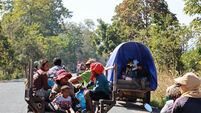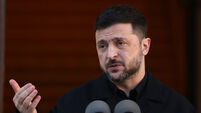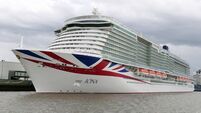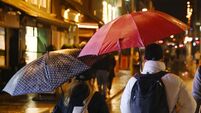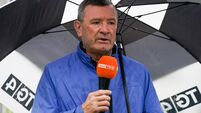Clampdown in Libyan capital as protests close in
Two pilots let their warplane crash in the desert, parachuting to safety, rather than bomb an opposition-held city.
The opposition said it had taken over Misrata, which would be the largest city in the western half in the country to fall into its hands. Clashes broke out over the past two days in the town of Sabratha, about 50 miles west of the capital, where the army and militiamen were trying to put down protesters who overwhelmed security headquarters and government buildings, a news website close to the government reported.




